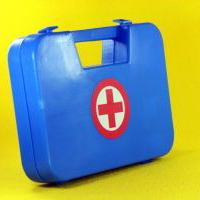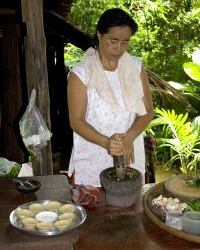Travel News
Avoiding Moctezuma’s Revenge: Talking With a Travel Doctor
 Savvy travelers know that even if you manage to sidestep that raging case of Ebola, you’re only an ice cube away from the dreaded Moctezuma’s Revenge (it’s also known as Montezuma’s Revenge, but why risk invoking the wrath of an Aztec ruler with anglicized spelling?).
Savvy travelers know that even if you manage to sidestep that raging case of Ebola, you’re only an ice cube away from the dreaded Moctezuma’s Revenge (it’s also known as Montezuma’s Revenge, but why risk invoking the wrath of an Aztec ruler with anglicized spelling?).
We sat down with travel doctor and global adventurer Stacy Waneka to find out what precautions are really necessary before taking the next trip—in order to be safe, healthy.
A primary care physician with a specialization in travel medicine, Dr. Waneka’s job is to keep international travelers healthy, while easing fears over those dreaded vaccinations.
With a keen eye on the Center for Disease Control and Prevention (CDC) watch list, Waneka researches every destination, and proposes a tailor-made healthcare strategy that cheers you on with every passport stamp.
Dr. Waneka secured her passport at a young age, with a family move to Saudi Arabia, and has never stopped exploring. From motorcycling through India, practicing healthcare in Indonesia, hitchhiking through Malaysia, tackling Mt. Everest, even treating Kosovo refugees during the Bosnian conflict, she’s a maverick at shielding travelers from the real enemy on any trip—sickness.
According to Dr. Waneka, the secret formula for healthy travel is simple: Pack the most valuable tool of all … common sense. After all, you can’t get a prescription for that. Here are her top tips for healthy travel from a PeterGreenberg.com interview:
TRAVELER’S HEALTH KIT
There are the basic things that you just can’t leave behind, make sure you have some moleskin, sunscreen, basic allergy medication, Tylenol or Advil … it depends on what kind of travel we’re talking about. A good tip for backpackers is to take a sheet and sew it in half, so that it’s kind of like a sleeping bag, and that way you always have clean linens with you … so you’re not going to get scabies.
 I always travel with Cipro, for traveler’s diarrhea. [Cipro is a brand name for a fluoroquinolone antibiotic, which can also be found under the name Noroxin.]
I always travel with Cipro, for traveler’s diarrhea. [Cipro is a brand name for a fluoroquinolone antibiotic, which can also be found under the name Noroxin.]
Imodium will slow things down whereas Pepto-Bismol is not going to do a whole lot. That 12-hour bus ride will be a lot easier if you’ve got some Imodium in your bag.
The other thing that I think is useful is hydrocortisone cream. Also, people with allergies need to make sure that they are traveling with Epi-Pens (epinephrine auto-injector). Insect repellants (with DEET) can be a big help when you have to worry about mosquitoes.
Oral re-hydration packets are another one of my favorites, so if you do start getting dehydrated or you do get a diarrhea, [these] can go a long ways to making you feel a lot better. It’s easier to maintain health with re-hydration than it is to find something locally.
FOREIGN PHARMACIES
Pharmacies in other countries are less reliable than what we have in the U.S.
Again, depending on geography: Mexico, for instance, is generally pretty reliable if you’re getting Cipro … Southeast Asia on the other hand has a huge influx in false drugs in the market and it’s not a place to fill prescriptions.
That’s why I generally send people with the prescriptions that they would need. Get it filled here and take it with you, so that you don’t have to worry about that.
BOTTLED OR TAP?
 Bottled water, period. If you are going to be camping or trekking at all, then that’s where iodine tablets come in extremely handy ….
Bottled water, period. If you are going to be camping or trekking at all, then that’s where iodine tablets come in extremely handy ….
Again that’s why it’s so helpful to go to someone to help prepare, because so much of it depends on what kind of travel you’re going to be doing. The different recommendations can really be tailored to a specific itinerary and it will make all the difference in the world.
When you are traveling anywhere outside the U.S., Canada, Western Europe, Australia, and New Zealand, you need to be thinking about bottled water.
If it’s not bottled, don’t drink it. And, remember, ice cubes don’t come from bottles.
WHERE DISEASES LURK
The African continent will probably always be our most difficult place in terms of infectious disease. It’s where we see things like yellow fever, malaria and meningitis, and they still do have outbreaks of Ebola—although it’s not something that travelers need to worry about as much but it’s an occupational risk.
[However], Costa Rica and Belize are probably the two most common travel spots that I hear people talk about where they’ve never stopped to think about typhoid, hepatitis A, and malaria.
Austria is a place where we commonly see tick-borne encephalitis (TBE). The Europeans get vaccinated. We don’t even have the vaccine for TBE in the U.S.!
If you’re going to be backpacking for two weeks, you need to think about this. If you’re going for a weekend to a ski resort—not such a big deal … There’s a big difference in exposure between a common tourist and an adventure tourist and a business traveler, and somebody who is going to do missionary work. All of those have a different level of risk and they need different recommendations.
TO VACCINATE OR NOT TO VACCINATE?
 The most frequent question is, “Do I really need that vaccine?” People don’t like to do the vaccinations. Vaccines themselves seem so scary in our culture … The answer is yes! I mean the risk of exposure through travel far outweighs the risk of the vaccine itself.
The most frequent question is, “Do I really need that vaccine?” People don’t like to do the vaccinations. Vaccines themselves seem so scary in our culture … The answer is yes! I mean the risk of exposure through travel far outweighs the risk of the vaccine itself.
It’s important to realize that there are three categories of things to think about for any country … You have to think about what a normal adult needs for basic preventive medicine. Then you have to think about what’s recommended for the traveler, and that’s where you get into, “Well, what’s endemic in that country?” Things like hepatitis A, typhoid and malaria.
Then you have to look at what’s required. Certain countries have vaccinations that are required for entry or exit. And that’s where it helps to go to somebody who stays current with the CDC recommendations and knows why they have those and what to do about them.
Your routine vaccination would be tetanus and make sure that you had your childhood measles, mumps and rubella. You would need to consider hepatitis A and typhoid vaccinations. Hepatitis B is increasingly recommended for travelers, and then you have malaria prophylaxis.
Some [vaccines] are just single injections and that gives you lifetime immunity, some are single injections that require boosters in several years. Some of them are a series of injections and you need two or three over the course of months.
Travelers usually get their vaccines within the last 30-45 days prior to departure. We also have accelerated schedules for vaccinations, which are becoming more popular. Very rarely does somebody come into me six months before a trip.
FOREIGN FOOD RULES
 [Eating foreign foods] is the best part of the trip! I’ll be the person in the night markets; I’ll be the person eating out of the stalls.
[Eating foreign foods] is the best part of the trip! I’ll be the person in the night markets; I’ll be the person eating out of the stalls.
Cooked foods are generally as safe as they can be. The uncooked rule is if you can’t peel it, don’t eat it. I know that’s a cliché, but it’s such a good one to remember. It really does make all the difference in the world.
[The rules apply] in Mexico, even if you’re just going down to Rosarito, Ensenada, the places that seem like they really are just an extension of the U.S. … Don’t order the garden salad.
WAITER, I THINK THERE’S A PARASITE IN MY SOUP
You can’t necessarily tell by symptoms … but when you have a bad diarrhea and you’re feeling sick, you should always assume that it is bacterial and treat it. And if it doesn’t respond to the antibiotics, then seek healthcare.
If you’re still sick when you return, see your doctor, because that’s when you do have to worry about amoeba and parasites that don’t respond to antibiotics.
FINAL WORDS
- Ask! If you have a question, ask! And, at the very least, people can go to the www.cdc.gov website. That is the definitive traveler’s resource.
- Think! Common sense will take care of just about any situation, whether we’re talking about safety issues, or food issues, or exposure issues.
- Prepare! Common sense is most useful with preparation. …It’s preparation in terms of vaccines, languages and knowing where you’re going, and knowing the culture and the customs and a little bit about the geography. Preparation in terms of your basic supplies. Make sure you’ve got the right clothing, and the right footwear. I remember trekking in Nepal with a young New Zealander who had sneakers. Here we are hiking up to Everest Base Camp and he had the worst blisters … and he ultimately had to stop the trek and go back down because he just wasn’t prepared.
- Go! People get afraid and they are concerned about the risks that we take when we travel and all of this stuff being said, go, enjoy it! There is so much out there that we should love and learn and if we don’t take the chance and we don’t put ourselves out there then I think that we really miss out on a lot.
[Editor’s Note: Be prepared that insurance doesn’t always cover travel consultation fees or vaccines. Make sure to also check with your health insurance policy to clarify coverage before traveling to a foreign country.]
For more travel health information, visit:
Dr. Waneka’s Travel Advice: www.drwaneka.com/Travel.htm
The Center for Disease Control and Prevention: www.cdc.gov/
The World Health Organization: www.who.int/en/
U.S. Department of State: www.state.gov/ for extensive overviews of countries, culture, as well as current U.S. Foreign Relations—all valuable information to have upon entering a new country, and the content is often more current than travel guidebooks.
By Margaret Emery for PeterGreenberg.com.
Get more information on staying healthy on the road with Travel Health & Fitness.
Find out how to keep your self safe on the road with Travel Safety & Security.
Previously by Margaret Emery:
Off the Brochure Travel Guide: Brussels, Belgium
Off the Brochure Travel Guide: Antwerp, Belgium
Off the Brochure Travel Guide: Tallinn, Estonia
Tips from a Travel Hero: Charles Veley, the World’s Most-Traveled Man
Traveling With Allergies: How to Buy Clean, Think Green and Travel Light












